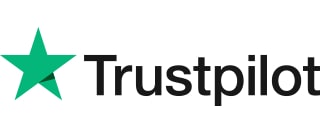Jessica A. in Texas says, “I’m a long-time listener and huge fan of your podcast! My husband and I are in our early 30s and have set ourselves up well financially. We have about $60,000 in cash sitting in a 0.4% ‘high-yield’ savings account. We think it could be doing more for us, but we’re not sure where to begin.
Our only debt is our mortgage and we pay extra toward the principal each month. We have a 12-month emergency fund, max out our workplace retirement accounts, and both max out our Roth IRAs every year. We’re not eligible for HSAs but contribute to a 529 savings plan for our infant.
Is there some way to invest our extra money that would earn a higher return? Should we open up a brokerage account, and if so, what types of investments should we buy? We’re not well-versed in non-tax advantaged accounts and would appreciate any resources you recommend for becoming more educated investors.”
Thanks so much for your great question, Jessica! You get a virtual high-five for accomplishing so much in your financial life at such a young age. You’re in an enviable position and are certainly asking the right questions.
Once you’ve covered the basics with funding your emergency savings and investing regularly, and you still have money left over, you have excellent options for growing it. In this post, we’ll cover what to do when your income increases or you receive a cash windfall and end up with extra money.
When you’re fortunate enough to have extra money to invest, I recommend first taking a holistic view of your financial life and reviewing your goals. Before making significant money decisions, it’s wise to consider what you genuinely want to accomplish.
For instance, should you create more security by increasing certain insurance coverages, open a college savings plan for your kids, buy a home, or start a business? Only you know the answers.
In addition, as your life changes, you may need more or less savings in the bank, updated emergency documents, or a new estate plan. As your income increases, the trick to building wealth is resisting “lifestyle creep” or spending more. If you earn more and maintain or decrease your expenses, you’ll reach any financial goal you dream about much faster.
Here are seven wise ways to make your extra money grow.
1. Max out a Roth IRA
I always recommend maxing out tax-advantaged accounts first and then putting money into taxable accounts. So, Jessica and her husband are smart to max out their Roth IRAs every year. It’s especially wise when you’re also contributing to a workplace retirement plan, such as a 401(k) or 403(b). Unlike with a traditional IRA, there’s no restriction on the tax break for participating in both retirement accounts when you earn over an annual limit. I’ll explain more in a moment.
So, no matter how much you contribute to a retirement plan at work, you can always max out an IRA in the same year. For 2022, you can contribute up to $6,000, or up to $7,000 if you’re over age 50.
However, there are annual income limits to qualify for a Roth IRA that don’t apply to a traditional IRA. Also, note that while your Roth IRA contributions aren’t tax-deductible, they give you tax-free income when you take distributions after age 59½.
For 2022, if you file taxes as a single, you’re ineligible for a Roth IRA when your modified adjusted gross income (MAGI) reaches $144,000. If you’re married and file taxes jointly, neither of you can contribute to a Roth IRA when your household MAGI reaches $214,000.
If your income is below these annual limits, you can fully fund a Roth IRA and a workplace retirement plan in the same year, giving you terrific tax benefits to enjoy now and in the future.
2. Max out a self-employed retirement account
Jessica didn’t mention if she or her husband have other income sources, such as earnings from self-employment. When you have business income, there are more tax-advantaged ways to save for retirement, in addition to an IRA, even if you already max out a workplace retirement plan.
One of my favorite self-employed retirement accounts is a Simplified Employee Pension plan, known as a SEP-IRA.
It allows you to make tax-deductible contributions up to 20% of your net self-employment income. For 2022, your total contribution can be up to $61,000; however, you can’t contribute more to a SEP-IRA than you earn.
I have a SEP-IRA because it’s an easy account to open and maintain. It’s an excellent option for anyone who has a day job and makes full or part-time money on the side.
3. Max out a health savings account (HSA)
My next favorite tax-advantaged account to put your extra money is an HSA. However, you must be enrolled in an HSA-eligible, high-deductible health plan to qualify. You can purchase health insurance through a group plan at work or as an individual.
Jessica mentioned that she isn’t qualified for an HSA, which might be because she’s insuring an infant. When you have kids or chronic illnesses that require frequent doctor visits and medical care, you typically save money with a health plan that requires a lower deductible.
If you do have an HSA, they offer more tax benefits than retirement accounts. There are no restrictions on your income, contributions are tax-deductible, investment growth is tax-deferred, and distributions are entirely tax-free when you use them to pay qualified healthcare costs. There’s a wide variety of qualified expenses, including medical, dental, vision, chiropractic, acupuncture, prescriptions, and many over-the-counter medicines and products.
For 2022, you or anyone else (such as a family member or your employer) can contribute up to $3,650 when you have a self-only health plan or $7,300 for a family plan. Plus, if you’re over age 55, you can contribute an additional $1,000 to an HSA when you have either type of health plan.
Your HSA funds roll over from year to year with no penalty. And if you have a balance after age 65, you can spend it on non-medical expenses. Before age 65, if you spend HSA funds on non-qualified expenses, you must pay taxes plus an additional 20% penalty.
4. Fund a 529 college savings plan
Jessica also mentioned that she’s contributing to a 529 college saving plan for her child. If you want to pay for education expenses—such as tuition, books, computer equipment, Internet, and room and board—for you or a family member, a 529 comes with nice tax breaks. Plus, you can even use up to $10,000 per year for education expenses related to public or private schools for students in kindergarten through high school.
Once a student is out of high school, you can use a 529 for any college, university, graduate school, or vocational school without an annual limit, if the institution is eligible to participate in a federal student aid program.
While contributions are not tax-deductible, your account’s interest earnings and investment growth are never taxed if you use the funds for qualified expenses. And there are no restrictions on annual income to participate in a 529 plan.
Most states offer at least one 529; however, the fees and benefits vary, so it’s wise to compare plans. The good news is that you don’t have to be a resident of a state to enroll in its plan. For example, you could live in Florida, participate in a California 529, and use the funds to pay for a school in Michigan.
Also, note that some states that have an income tax offer residents a tax deduction or credit when you choose an in-state 529. Depending on where you live, that could add up to significant savings compared to an out-of-state plan.
The only downside of contributing to a 529 plan is that spending it on anything besides qualified education expenses comes with a penalty on the earnings portion of a distribution. You must pay income tax and an additional 10% penalty, on amounts that weren’t previously taxed. There are some exceptions, such as if a student receives a scholarship, becomes disabled, or dies.
5. Make after-tax retirement contributions
As I previously mentioned, no matter how much you contribute to a workplace retirement plan, such as a 401(k), you can also max out a traditional or Roth IRA in the same year. For 2022, you can contribute up to $6,000, or $7,000 if you’re over 50.
However, be aware that if you or a spouse participate in a retirement plan at work, the tax deduction you receive for traditional IRA contributions may be reduced or eliminated, depending on your income.
While it may seem pointless to make non-deductible or after-tax contributions to a retirement account, such as a traditional IRA or traditional 401(k), they still offer excellent benefits. That’s because your investment earnings grow tax-deferred–you typically avoid paying tax on the account growth until you take withdrawals after age 59½.
So, if you’re like Jessica and maxed out a retirement account at work and an IRA and you still have more to invest, consider making non-deductible contributions to your 401(k) or 403(b). As long as your retirement plan allows it, you can use it to shelter more of your income, up to an annual limit, from taxation on investment growth.
For 2022, the total amount of deductible and non-deductible contributions you can make to an employer-sponsored retirement plan is $61,000, or $67,500 if you’re over age 50.
6. Invest through a brokerage account
Once you’ve exhausted tax-advantaged ways to invest your extra money, it’s time to look at taxable options, such as a brokerage account or other investment platform. The investment firm you choose should depend on the types of investments you want to purchase, such as mutual funds, exchange-traded funds, real estate funds, cryptocurrency, or precious metals.
When you have dividends or capital gains, you’ll have to report the income on your tax return. The brokerage will send you the appropriate tax forms in January for the prior year so you know the types and amounts of income earned or lost.
The tax rate you must pay depends on how long you own an investment and your taxable income. When you profit from an asset you owned for less than a year, it’s a short-term capital gain. You pay the same tax rate as for your wages or other “ordinary” income, which currently ranges from 10% to 37%.
Your tax on assets owned for longer than a year are long-term capital gains. They range from 0% to 20%, depending on your income, with the average investor paying 15%. While paying tax on investment growth in a brokerage isn’t ideal, the upside is that you can take withdrawals at any time without penalty.
7. Purchase annuities
An annuity is a contract between you and an insurance company that promises to pay you income. They can be complicated investments because there are many different types sold by insurance companies, banks, and financial advisors.
Think of an annuity as insurance or a guarantee that you’ll have a future income stream. You purchase one with a lump sum or by paying premiums over time and the insurance company invests your money. They typically pay you over a set period, even for as long as you live, so you never run out of money in retirement.
Unlike with most tax-advantaged accounts, such as a 401(k), IRA, or HSA, annuities don’t have an annual contribution limit so you can put in as much as you wish. While the funds you contribute aren’t tax-deductible, your investment earnings are tax-deferred. And when you take distributions, the earnings portions of your withdrawals will be taxable.
Annuities may be a good option after you’ve maxed out all other tax-advantaged accounts, such as a retirement plan at work, one or more IRAs, an HSA (if you’re eligible) and are approaching retirement, say over age 50.








